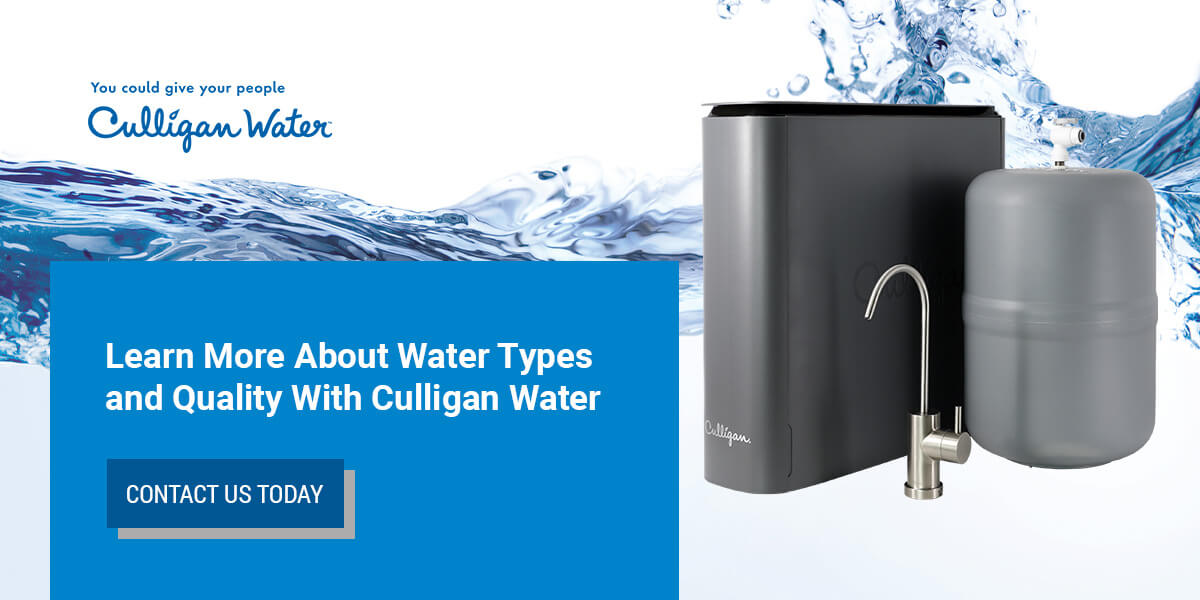Table of Contents
Multiple kinds of bottled water are available in stores, with two of the most popular types being spring and purified. The type you choose to supply and drink depends on taste, quality and accessibility preferences. Understanding the differences can help you determine the best option for your needs.
What Is Spring Water?
Spring water is a type of water sourced from groundwater. It comes from an underground aquifer that sits below or at the earth’s water table, the area below the ground that is permanently saturated with water. To collect water from the aquifer, you must use a well. A couple of other ways to collect spring water are from the opening of the spring, where the water naturally flows, or through a borehole, which is a narrow hole drilled into the ground to which you can attach a pump system to extract water.
Spring water undergoes no form of filtration but still gets treated, typically with ozone, during bottling to ensure it is safe to drink. Treatment ensures the water complies with the Environmental Protection Agency (EPA) and Food and Drug Administration (FDA) standards. Due to the treatment process, spring water retains most of the natural minerals found in the source.
What Is Purified Water?
Purified water undergoes filtration, such as reverse osmosis, distillation or deionization. The processes remove everything except the basic water molecules to bring the water to its purest form. At Culligan Water, we use reverse osmosis, which is when water moves through membranes to filter out minerals and other chemicals for purification. Other filtration methods include:
- Distillation: Water heats until it turns into steam and the unwanted particles dissolve. Then, the steam recondenses into a pure liquid form.
- Deionization: When the minerals in water dissolve, they get replaced with hydrogen and hydroxide particles, leaving the water in a purer state.
Purified water must also meet EPA and FDA guidelines to be labeled and sold as purified water.
Other Differences Between Spring and Purified Water
Besides the filtration processes, other differences between spring and purified water include:
- Taste: Purified and spring water are safe to drink. They may taste different since purified water has no minerals, while spring water has some. The type of water you choose to supply and drink depends on your taste preferences.
- Versatility: Spring and purified water can be used for various applications, such as drinking and cooking. Purified water can also work in humidifiers, diffusers or medical equipment. You could use spring or purified water in fish tanks, but you would need to test the spring water first to ensure the mineral amounts are suitable for fish.
- Accessibility: Most retailers carry bottled purified and spring water, so you can access it when needed. When you need purified bottled water, get it from Culligan Water.
- Quality consistency: Purified water undergoes similar filtration systems and methods to produce the purest form of water for drinking and other uses. The water quality is the same because of the standard processes for almost all purified water sources. Spring water from different brands may have different qualities due to the various sources it can come from and how many minerals are in it.
Which Is Better?
Ultimately, determining if spring water is better than purified water depends on personal preferences and needs. Both have qualities that could make one more appealing than the other.
Learn More About Water Types and Quality With Culligan Water
Culligan Water can help you get better-tasting water without the hassle. Learn more about our water services and products by contacting us online or calling 717-697-0657 today.

